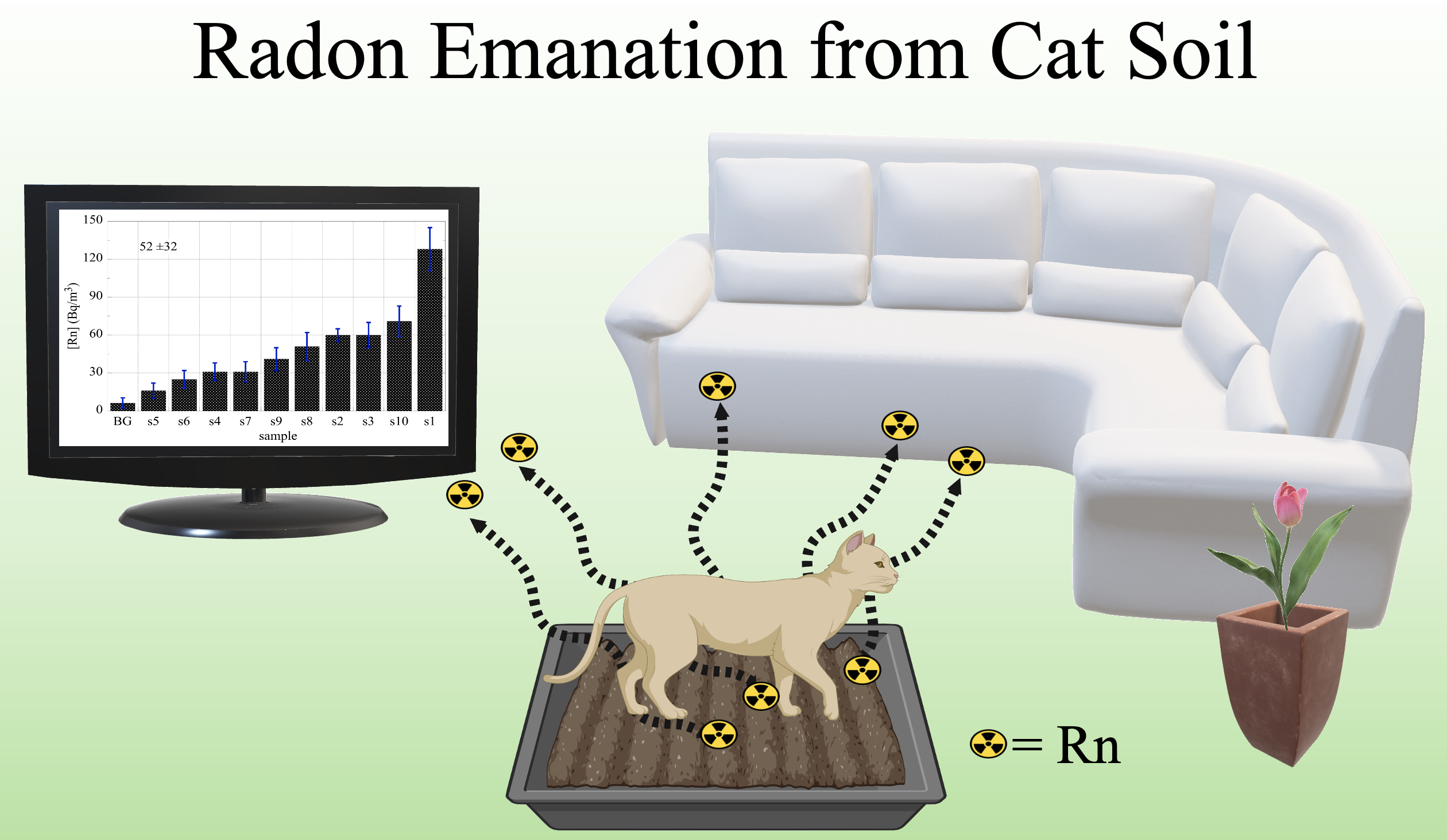
The main component of clumping cat litter is usually bentonite, which besides potassium (including K-40) contains uranium radium, and may also exhalate radon. Ten different cat litter samples, which are commercially available in Cyprus and have been imported from various countries, have been analysed regarding their uranium and radium levels, and the associated radon exhalation rates. The uranium levels varied between 2.5 mg/kg (32 Bq/kg) and 4 mg/kg (50 Bq/kg) and were determined by ICP-OES after acidic dissolution of the cat litter samples. The radioactivity concentration of radium in the samples (4 Bq/kg < [Ra-226] < 40 Bq/kg) was determined after EDTA extraction of radium from the litter matrix followed by the determination of the associated radon exhalation rates using a continuous radon monitor. Similarly, the radon exhalation from cat litter was measured using a defined amount of cat litter and the average radon levels emitted varied between (6 Bq m-3 < [Rn] < 128 Bq m-3). However, even in the case of the cat litter with the highest radionuclide concentration, the contribution to indoor radon in an average room is estimated to be insignificant and subsequently the impact of the associated additional radioactive dose.
Total file downloads: 25